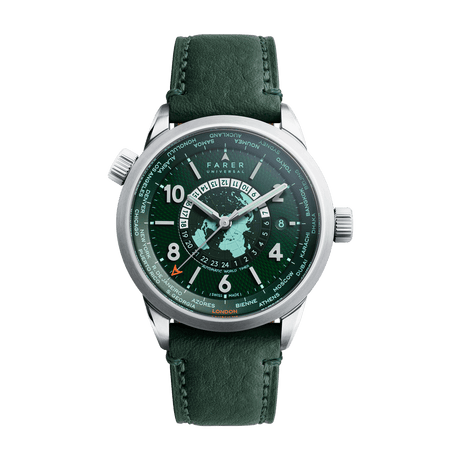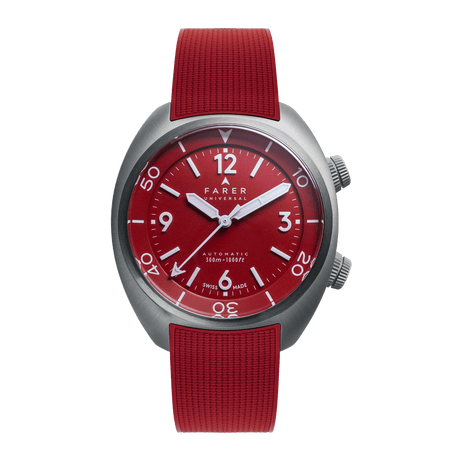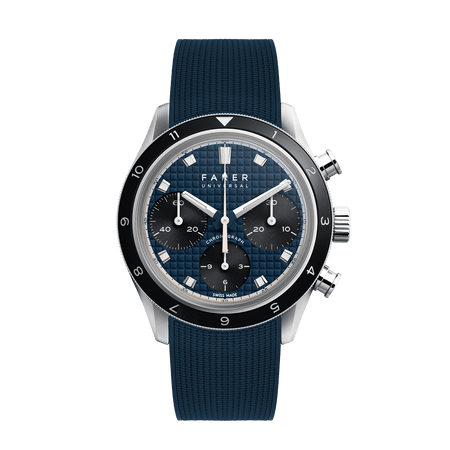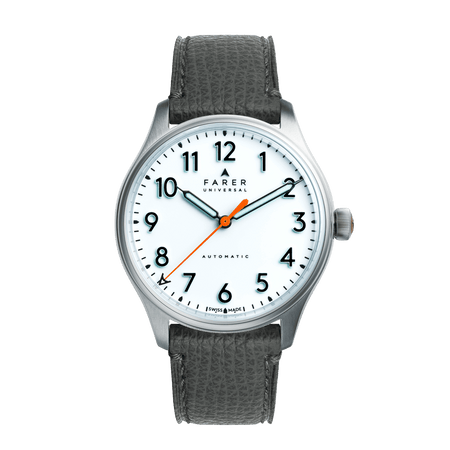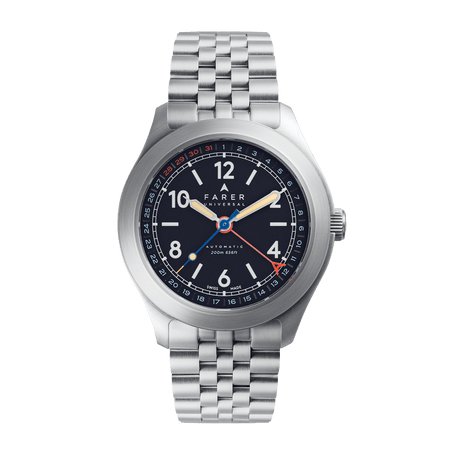THE STORY OF THE MONOPUSHER
featured | 26 Aug
It’s always difficult attributing ‘firsts’ in Watchworld (remember when Rieussec’s ‘first’ chronograph was eclipsed by the discovery of an even earlier watch from Louis Moinet?), but Longines seems to have produced the first commercial wrist chronograph back in 1913 and, sure enough, it was a Monopusher.
It wasn’t long before these new wrist chronographs originally intended for the doctor’s surgery found themselves outside and timing all sorts of other things - like racing motor cars.
It wasn’t long before these new wrist chronographs originally intended for the doctor’s surgery found themselves outside and timing all sorts of other things - like racing motor cars.
Named for British land speed record holder Henry Segrave, our new Monopusher is a modern take on this original chronograph complication, using the new Swiss Sellita SW510 MP (MP for Monopusher) movement.


The history of the Sellita SW510 is almost a history of Swiss watchmaking itself. Sellita was founded in La-Chaux-de-Fonds back in 1950 and the SW510 can trace its heritage right back to 1948 and the manual-wind, 17 jewel Venus cal. 188. This used a reliable cam and lever system for its chronograph complication. When movement maker Valjoux bought out Venus in the mid-late 1960s, they renamed it the Valjoux 7730 and put it to work as everything from a standard two-register chronograph to a yacht timer. In 1974, Valjoux added a self-winding system, creating the almost universal cal. 7750 - the movement on which our SW510 is based.
So as well as having serious watchmaking heritage behind it, the SW510 MP is an up-to-the minute, self-winding movement with 23 jewels, running at 28’800 vibrations per hour (4 Hz). We’ve used the Elabore grade movement, adjusted in three positions (to minimise any effect of gravity on the balance wheel’s oscillation) with enhanced power reserve, delivering up to 62 hour power reserve. On closer inspection you'll see the custom finishing with beautifully heat-blued screws, guilloché detailing on the bridge and a custom navy blue turbine rotor design with striking orange branded lettering.

The Segrave is a mono-compax (single chrono function subdial) watch, with running seconds at 9 o’clock on the dial, a thirty minute counter at 3 and a 60 second chronograph in the center. The dial design, with its matte black dial, silver baton markers and green telemeter scale on the bezel, has a larger, recessed minute counter at 3 in turned silver white, whereas the running seconds at 9 is flush with the dial’s monochrome surface.
You won’t see too many telemeter scales on watches, so what’s it for? A telemeter is ideal for timing something you can both see and hear. Imagine you’re out mountain walking and you see a storm in the distance. Hit the chronograph Monopusher as you see the first lightning flash, then release it when you hear the following thunder clap and read off the distance from the storm (kilometers in the Segrave’s case) on the telemeter scale. Or you could just use it to time your favourite racing Bentley at Silverstone. The teal hand of the thirty minute counter matches the scale’s colour on the bezel.


The case is cut from a single block of marine grade 316L stainless steel at 40.5mm diameter and 12.2mm depth, with brushed lug tops and a polished outer bezel. Unique to this model are the harlequin-engraved border flanks, focusing the eye on the case curvature of the drop away lugs - creating a visually slimming effect. The inner anti-reflective crystal is a curved box case sapphire, adding just 2.5mm to the total depth of the watch. An easy wear for a chronograph, with the design of the bellytanker shaped case back subtly absorbing the full height to expand only around the rotor within.
There’s something elegant about a Monopusher chronograph, with just that single pump pusher to start, stop and reset. It’s everything you need and nothing you don’t. And, if you like your watch history, remember Monopushers are where wristwatch chronographs started.




